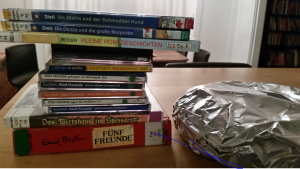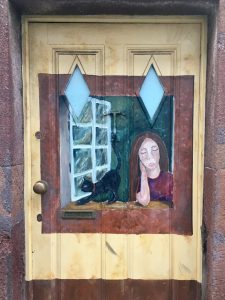By Dagmar Mißfeldt
 In their 2016 book, Fintiaanien Mailla, three Finnish women take readers on a journey into unknown territory. Meeri Koutaniemi (photo journalist), Maria Seppälä (journalist and documentary filmmaker), and Katja Kettu (bestselling author) introduce us to Findians, a group of people who practically nobody has heard of, at least until now.
In their 2016 book, Fintiaanien Mailla, three Finnish women take readers on a journey into unknown territory. Meeri Koutaniemi (photo journalist), Maria Seppälä (journalist and documentary filmmaker), and Katja Kettu (bestselling author) introduce us to Findians, a group of people who practically nobody has heard of, at least until now.
Between 1860 and 1940, approximately 400,000 Finnish emigrants left their homeland for North America in search of a better life. They mainly settled in Minnesota, Michigan, and Ontario. 400,000 is an amazingly high number, especially when one considers that Finland only had a population of about three million people in 1900. In their new homeland, the Finnish came in contact with the Ojibwa people. Relatively quickly, the indigenous people and the Finns noticed that they had much in common:
Read more »










 In their 2016 book, Fintiaanien Mailla, three Finnish women take readers on a journey into unknown territory. Meeri Koutaniemi (photo journalist), Maria Seppälä (journalist and documentary filmmaker), and Katja Kettu (bestselling author) introduce us to Findians, a group of people who practically nobody has heard of, at least until now.
In their 2016 book, Fintiaanien Mailla, three Finnish women take readers on a journey into unknown territory. Meeri Koutaniemi (photo journalist), Maria Seppälä (journalist and documentary filmmaker), and Katja Kettu (bestselling author) introduce us to Findians, a group of people who practically nobody has heard of, at least until now.
 f course the title is facetious: I certainly don’t want to – even if I could, which I can’t – improve one of the best and most anthologized poems in the English language written by one of the greatest lyrical voices of all times. What I ‘do’ want to do, however, is write about a teaching tool that initially sends shivers up every student’s back: continuing a poem, using the same rhyme scheme and meter. Once they’ve mastered the task, however, they’re quite proud of themselves – and rightfully so.
f course the title is facetious: I certainly don’t want to – even if I could, which I can’t – improve one of the best and most anthologized poems in the English language written by one of the greatest lyrical voices of all times. What I ‘do’ want to do, however, is write about a teaching tool that initially sends shivers up every student’s back: continuing a poem, using the same rhyme scheme and meter. Once they’ve mastered the task, however, they’re quite proud of themselves – and rightfully so.